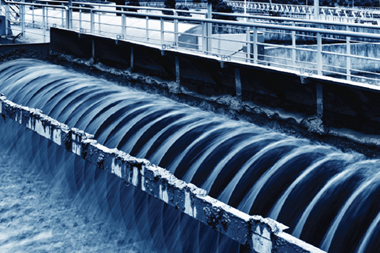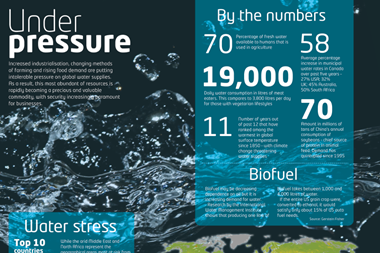Over a quarter of companies experienced detrimental impacts from water this year

Awareness of water-related risks is high among corporates, but the metrics used to measure these risks make it hard for companies to see where the real exposures are.
For its 2016 Annual Report of Corporate Water Disclosure, CPD, the global non-profit tracking corporate environmental performance, questioned 604 large global companies on their approach to managing water risks.
The report found 27% of companies experienced detrimental impacts from water this year, and companies expect 54% of the 4,416 water risks they identified to materialise within the next six years.
CPD provided examples of how diverse water-related risks are and how they can impact a company. For example, Japanese power giant Tokyo Electric Power Co. made a $9.7bn provision to address groundwater pollution from the Daiichi nuclear power plant following the 2011 tsunami.
For General Motors Company in Brazil, drought pushed up water costs by $2.1m in 2015, at the same time as reduced availability of hydropower pushed up electricity costs by $5.9m. The company responded with increased water conservation efforts and energy efficiency measures.
The degree of water risk for a company depends on how the availability of water impacts on its business, and how its use of water impacts on people and ecosystems.
“A comprehensive risk assessment is essential for companies to develop a clear understanding of physical, regulatory and reputational exposures as well as opportunities available,” the CPD states in its report.
Its research found that 87% of companies assess water risks. However, the non-profit organisation recommends companies to conduct risk assessments that are company-wide and comprehensive, including their direct operations and their supply chains, but only 13% of disclosing companies met this higher standard in this year’s report.
“Assessment at the basin level poses challenges for companies, given that it requires an understanding of the activities and needs of local communities and other local water users,” CPD explains.
A full understanding of all water-related risks is also complicated by complex global supply chains, leaving some companies exposed without being aware of it.
Simon Abrams, senior manager in EY’s Climate Change and Sustainability Services group, says: “Many companies heavily dependent on water but may not realise it, because it may be one stage down in the supply chain. It is not a cost or a resource which they are necessarily tracking, so they may not have really taken into account the changes that might be coming.”
Water scarcity is an increasing risk globally, with the United Nations projecting that by 2025, 1.8 billion people will be living in countries or regions with absolute water scarcity, and two-thirds of the world’s population could be living under water-stressed conditions.
In order to map their water risks, companies need to be able to measure their water usage. However, Abrams believes the metrics currently used for conversations on water scarcity are not right.
“People talk about water footprinting, but that doesn’t tell you where the real risk lies. You could be using lots of water in Scandinavia and it’s not a problem. So it’s not just about whether you use significant volumes of water, but about what the risks are for the use of water in that particular situation.”
A lack of good metrics also inhibits companies to ask their suppliers the right questions when mapping water risks along their supply chain.
“Because the metrics are not particularly helpful or visible to people, where mature companies are asking for water usage in their supply chain, they may not necessarily get enough information to understand where the risks are with that water usage,” Abrams explains.
Many responsible companies will take some ownership of water-scarcity risk and work with their suppliers to see what they can do. “Companies like PepsiCo and Walkers work very closely with their potato farmers and they’ve been developing and harnessing their water irrigation techniques so that they are the most efficient. They have reduced the amount of water needed and increased their yields for their potatoes by over 60 or 70%,” he says.
“All the consumer goods that I’m aware of are all very switched on to this and they are working very closely with their suppliers.”




















No comments yet